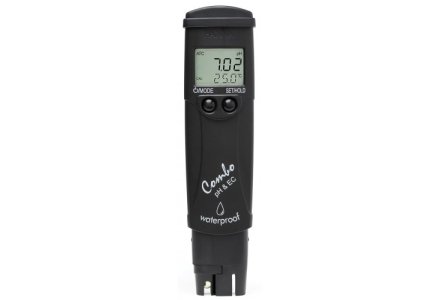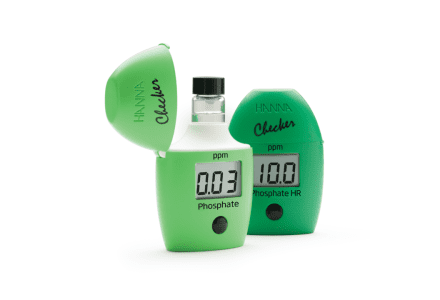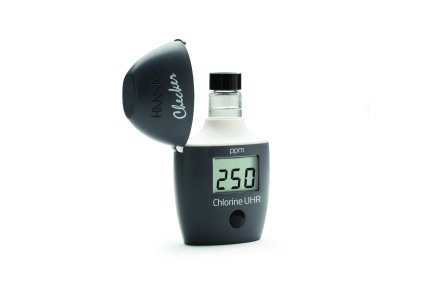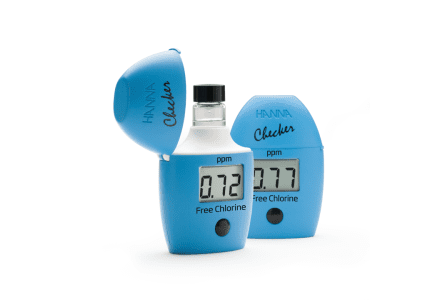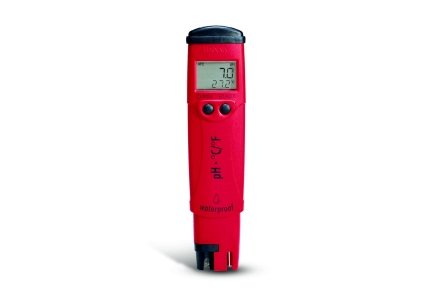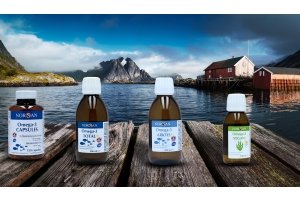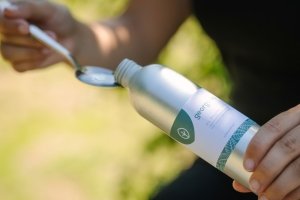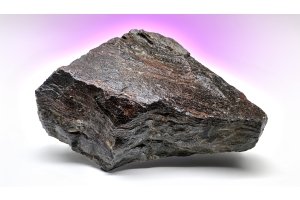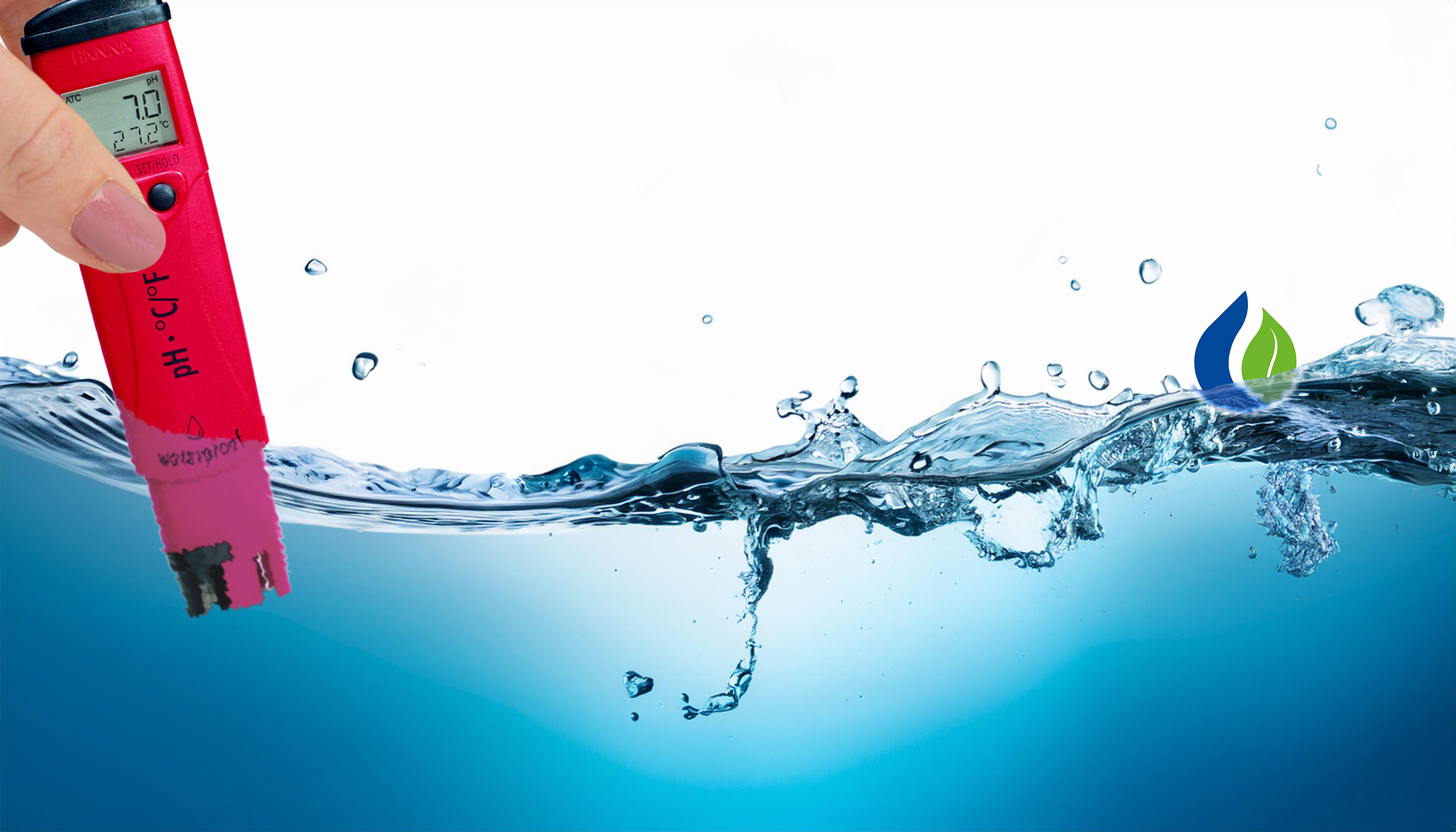
Water is one of the most essential resources on earth; we drink it, use it in our agriculture and industry, and it is an important part of our natural ecosystems. But how do we know if the water we use is clean and safe? That's where measuring water quality comes in. In this blog, we take a closer look at how to measure water quality and why it is so important. We discuss some crucial factors, such as temperature, transparency and water depth, and look at what substances may be present in the water that affect its quality. We also explain how you can take your own measurements.
What do you need to pay attention to?
To properly measure water quality, it is important to identify different properties of the water. Each characteristic provides valuable information about the condition of the water and possible contaminants. Factors such as temperature, transparency and water depth can greatly affect how well plants and animals can thrive in the water. In addition, various dissolved substances also play a role, such as nutrients and possible contaminants, which can affect human and environmental health. Below we discuss these factors step by step so you know what to look for when measuring water quality.
Temperature of Water
The temperature of water plays a crucial role in water quality. It affects not only the living conditions for plants and animals, but also the chemical processes and solubility of various substances in the water. Warmer water, for example, can contain less oxygen, making it difficult for fish and other organisms to survive. In addition, higher temperatures encourage the growth of algae and bacteria, which can lead to a deterioration in water quality.
When measuring water quality, it is important to record temperature because many water quality standards and guidelines are temperature dependent. This helps interpret other measurements, such as oxygen levels and the presence of certain organisms.
When measuring temperature, it is important to measure it at different depths and times because it can vary by season and time of day.
Transparency
The transparency of water indicates how clear or turbid the water is, and this says a lot about water quality. Clear water usually indicates a low concentration of suspended solids, while turbid water may indicate the presence of sediment, algae, or other contaminants. Reduced transparency can have negative effects on the ecosystem because sunlight does not penetrate as deeply into the water. For example, this affects the photosynthesis of aquatic plants and can increase water temperatures.
Water depth
Water depth is an important factor in assessing water quality because conditions can vary greatly as you go deeper. For example, in deeper layers of water, less oxygen and light can penetrate, which affects life and chemical composition at those depths. This difference between the upper and lower water layers can affect the distribution of nutrients and contaminants.
Different Substances in Water
Water can contain a wide range of substances, which can be of both natural origin and the result of human activities.
Here are some major categories of substances commonly found in water:
Natural substances:
Minerals: Such as calcium, magnesium, sodium and potassium, which come from the breakdown of rocks and soils. These minerals are important for the health of aquatic organisms.
Organic substances: These include plant and animal matter, such as leaves and algae, which can decompose in the water and release nutrients.
Nutrients:
Nitrates and phosphates: These substances are essential for plant growth, but in high concentrations they can lead to eutrophication, resulting in excessive algae growth and oxygen depletion in the water.
Pollutants:
Heavy metals: Such as lead, mercury, cadmium and arsenic, which can be harmful to human health and the environment. They can come from industrial activities, mining and burning of fossil fuels.
Pesticides and herbicides: Chemicals used in agriculture that can enter water bodies through runoff or discharge.
Microbiological substances:
Bacteria: Some bacteria are beneficial, while others can be pathogenic and cause disease. Measuring indicator organisms such as E. coli is important for assessing microbiological water quality.
Viruses and fungi: These can also be present in water and can pose health risks.
Chemical substances:
Organic contaminants: Such as solvents, oils and other chemicals that come from industrial processes and household use.
Endocrine disruptors: These are substances that can affect the hormonal systems of organisms and can come from medications and personal care products.
Physical substances:
Particles and sediment: Such as sand, clay and organic matter, which affect water clarity and can affect the habitat of aquatic organisms.
Pure Water Measurement Guidelines
When measuring the quality of pure water, there are specific measurement guidelines and regulations that must be followed to obtain accurate and reliable results. They ensure that measurements are taken consistently.
Some important measurement guidelines include:
Use of standardized measuring instruments: For reliable results, it is essential to use calibrated measuring instruments, such as pH meters, oxygen meters, and turbidity meters (transparency). These instruments must be checked, calibrated, and maintained regularly.
Take samples at representative locations and depths: Water samples should be collected at various locations and depths within a body of water to obtain a representative picture of the water quality. This is especially important in larger lakes or rivers, where water quality can vary from location to location.
Correct times for measurements: The time of day and season can affect water quality, so measurements should be taken at various times to obtain a complete picture of the fluctuations in water quality.
Safety precautions: When working with water samples, especially in contaminated water, the necessary safety precautions must be observed to prevent damage to health or cross-contamination of samples.
Documentation and reporting: All measurements and results must be properly documented and reported according to the set standards, so that they can be compared with the legal limits for clean water. This helps to ensure water quality and to intervene early if the standards are not met.
Getting started yourself
Do you want to measure water quality yourself? With the right tools and techniques, you can easily get started testing the water in your area yourself.
For basic measurements, you only need a few simple tools, such as a pH meter, a thermometer, a Secchi transparency disk and an oxygen meter.
It can also be useful to measure electrical conductivity (EC) and total dissolved solids (TDS). Electrical conductivity (EC) indicates how well a liquid can conduct electrical current, which depends on the concentration of ions in the water. Total dissolved solids (TDS) is a measure of the total amount of dissolved substances in the water, such as salts, minerals and organic substances.
If you want to get serious, you can also consider more advanced measuring equipment, such as devices that can measure the concentration of specific (polluting) substances.
It is important to always work according to the correct methods: take samples at different depths and locations, and measure at different times of the day. This will give you a representative picture of the water quality. In addition, you can compare your findings to the standards for clean water to determine if there is contamination or other problems.
Why Measure Water Quality?
Measuring water quality is essential to understand how healthy a water source is. Water is not only an essential resource for human consumption, but it also plays a crucial role in ecosystems. By monitoring water quality, we can detect and address potential contamination or environmental changes in a timely manner.
Measuring water quality helps identify sources of contamination, such as industrial discharges, agricultural runoff or contamination from household waste.
In addition, monitoring water quality is essential for maintaining biodiversity. Many aquatic organisms, from fish to bacteria, are very sensitive to changes in water quality. By measuring regularly, we can ensure that these organisms have the right living conditions and the ecosystem remains healthy.
Conclusion
Measuring water quality is essential for protecting both our health and the environment. By paying attention to factors such as temperature, transparency, water depth, acidity, EC, TDS and the presence of various substances, you can get a good idea of the quality of the water in your immediate environment. Think of water sources, ponds (with fish), but also swimming pools and jacuzzis.
Do you want to get started with measuring water quality yourself? At Meditech Europe you will find a wide range of water quality meters that can help you easily and accurately analyze water. Visit our website to discover more and find the right tools for your measurements. For more information and support, you can always contact us.
